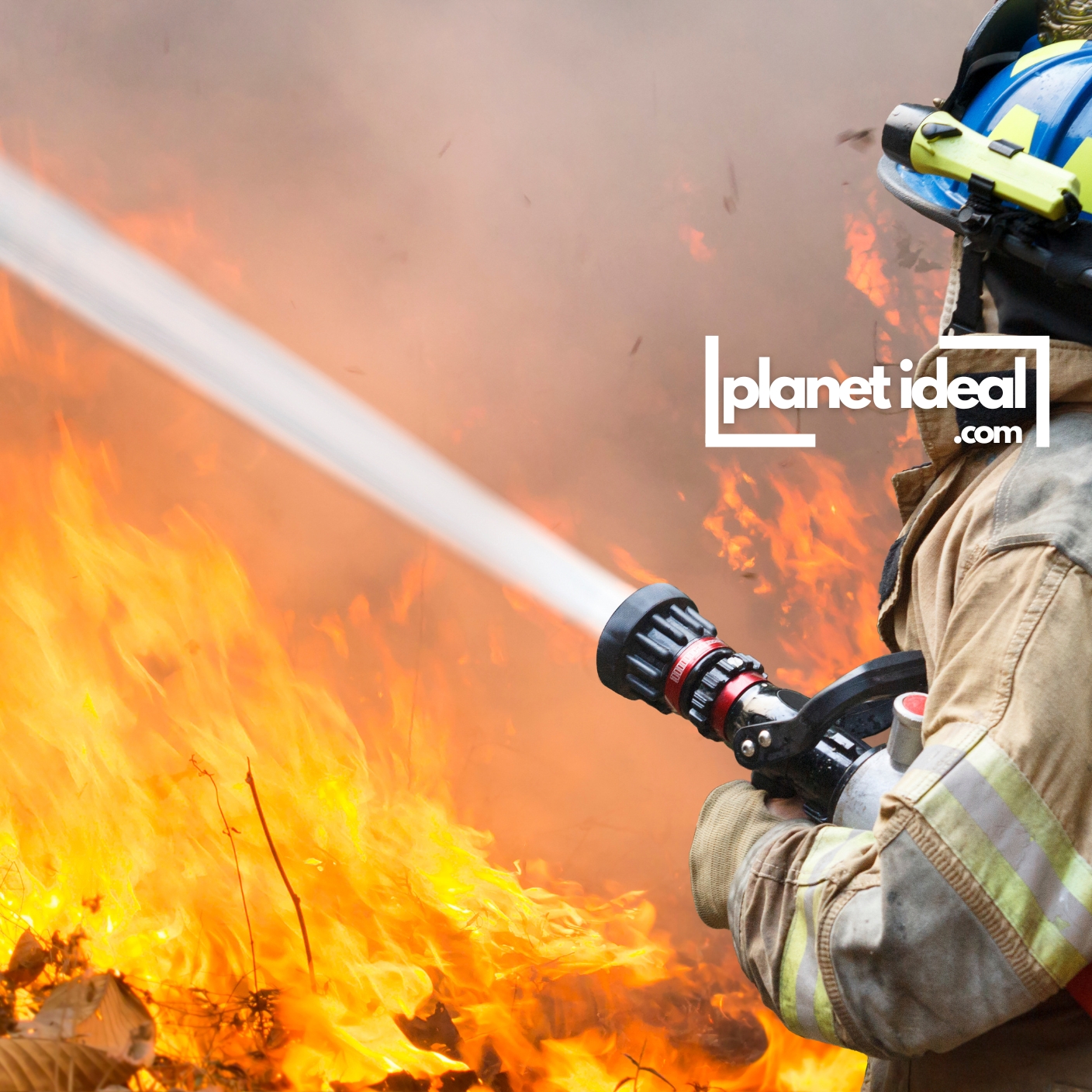Wildfires are raging across the globe with increasing intensity, leaving trails of devastation in forests, wildlife habitats, and human communities. While wildfires are a natural part of many ecosystems, their alarming rise in frequency and ferocity begs the question: what is driving this fiery surge? Scientists agree that one of the primary culprits is climate change.
Let’s unravel the intricate connection between these two phenomena and understand why this issue demands urgent attention.

A Recipe for Disaster: The Science Behind Wildfires
Wildfires occur when three key elements come together: heat, fuel, and oxygen. Historically, these fires have played an essential role in rejuvenating ecosystems, clearing dead vegetation, and even helping certain plants to germinate. But in recent decades, wildfires have gone from being occasional events to devastating infernos that claim lives, destroy homes, and release massive amounts of carbon dioxide (CO2).
Why? Because climate change is fundamentally altering the environment in ways that make it ripe for wildfire outbreaks. Here are the primary factors:
1. Rising Temperatures
The planet is heating up. According to the Intergovernmental Panel on Climate Change (IPCC), global temperatures have already risen by about 1.1°C (2°F) since pre-industrial times (IPCC Sixth Assessment Report, 2021). This warming trend creates the perfect conditions for wildfires by:
- Drying Out Vegetation: Higher temperatures pull moisture out of plants and soil, turning them into highly flammable fuel.
- Longer Fire Seasons: Warmer weather extends the periods during which fires can ignite and spread. For example, in the western United States, fire seasons are now two to three months longer than they were a few decades ago (National Interagency Fire Center, 2022).
2. Drought Conditions
Climate change is not just about heat; it’s also about water—or the lack thereof. Prolonged droughts, exacerbated by global warming, are leaving landscapes bone-dry and vulnerable to fires. The Southwestern U.S., parts of Australia, and regions in Southern Europe are experiencing some of the worst droughts in recorded history, creating tinderbox conditions (UN Environment Programme, 2022).
3. Stronger Winds
Wind is a wildfire’s best ally, spreading flames faster and farther than firefighters can contain them. Climate change is altering wind patterns in some regions, leading to more intense and erratic winds. These winds not only fan the flames but also carry embers across vast distances, sparking new fires miles away (California Department of Forestry and Fire Protection, 2021).
4. Lightning Strikes and Extreme Weather
As the atmosphere warms, it holds more moisture, which can lead to more intense thunderstorms. Paradoxically, while these storms bring heavy rains, they also increase the frequency of lightning strikes, a major ignition source for wildfires. In California, for instance, lightning ignited a record-breaking 2020 wildfire season (National Oceanic and Atmospheric Administration, 2020).
The Feedback Loop: Wildfires and Climate Change
The relationship between climate change and wildfires is not one-sided. Wildfires, in turn, exacerbate climate change, creating a vicious cycle:
- Carbon Emissions: Wildfires release enormous amounts of CO2 and other greenhouse gases into the atmosphere. In 2021 alone, wildfires emitted 1.76 billion tons of CO2 globally, equivalent to the annual emissions of Japan (Copernicus Atmosphere Monitoring Service, 2021).
- Forest Loss: Forests act as carbon sinks, absorbing CO2. When they burn, they not only stop capturing carbon but also release the carbon stored in their biomass.
- Albedo Effect: Burned areas with darkened soil absorb more sunlight, leading to further warming.
Real-World Impacts
The consequences of climate-fueled wildfires extend far beyond charred landscapes:
- Human Lives and Health: Wildfires are displacing millions, destroying homes, and causing respiratory issues from smoke inhalation (World Health Organization, 2021).
- Biodiversity Loss: Wildlife often cannot escape fast-moving fires, leading to mass deaths and habitat destruction.
- Economic Toll: Wildfires cost billions in damages, from firefighting efforts to rebuilding communities and addressing health impacts.
Solutions: What Can Be Done?
Tackling the link between climate change and wildfires requires both immediate and long-term action:
- Reduce Greenhouse Gas Emissions: Transition to renewable energy, improve energy efficiency, and protect carbon sinks like forests (IPCC, 2021).
- Adapt Land Management Practices: Controlled burns, thinning vegetation, and creating firebreaks can help reduce wildfire risks (Forest Service Research, 2020).
- Invest in Firefighting Resources: More funding for training, equipment, and research into fire-resistant infrastructure is essential.
- Educate Communities: Public awareness campaigns about fire safety and evacuation plans can save lives.
A Call to Action
Wildfires are not just a distant problem affecting remote forests; their smoke and impacts know no borders. From teens to seniors, everyone has a role to play in combating climate change—whether by reducing personal carbon footprints, advocating for policy changes, or supporting reforestation efforts. The time to act is now, before the next spark becomes an inferno.
Conclusion
The connection between climate change and wildfires is undeniable. As global temperatures rise, so too does the risk of catastrophic fires. But with collective effort, informed decisions, and a commitment to sustainability, we can hope to douse the flames and protect our planet for future generations.
At Planet Ideal, we’re on a mission to make sustainable living accessible for everyone. Our team of eco-enthusiasts writes short, snappy, and easy-to-digest articles designed to inspire real change without overwhelming. From practical tips to innovative ideas, we’re here to prove that living green can be stylish, convenient, and enjoyable. Join us as we empower individuals, families, and communities to embrace eco-friendly lifestyles—one step, one story, and one solution at a time.





